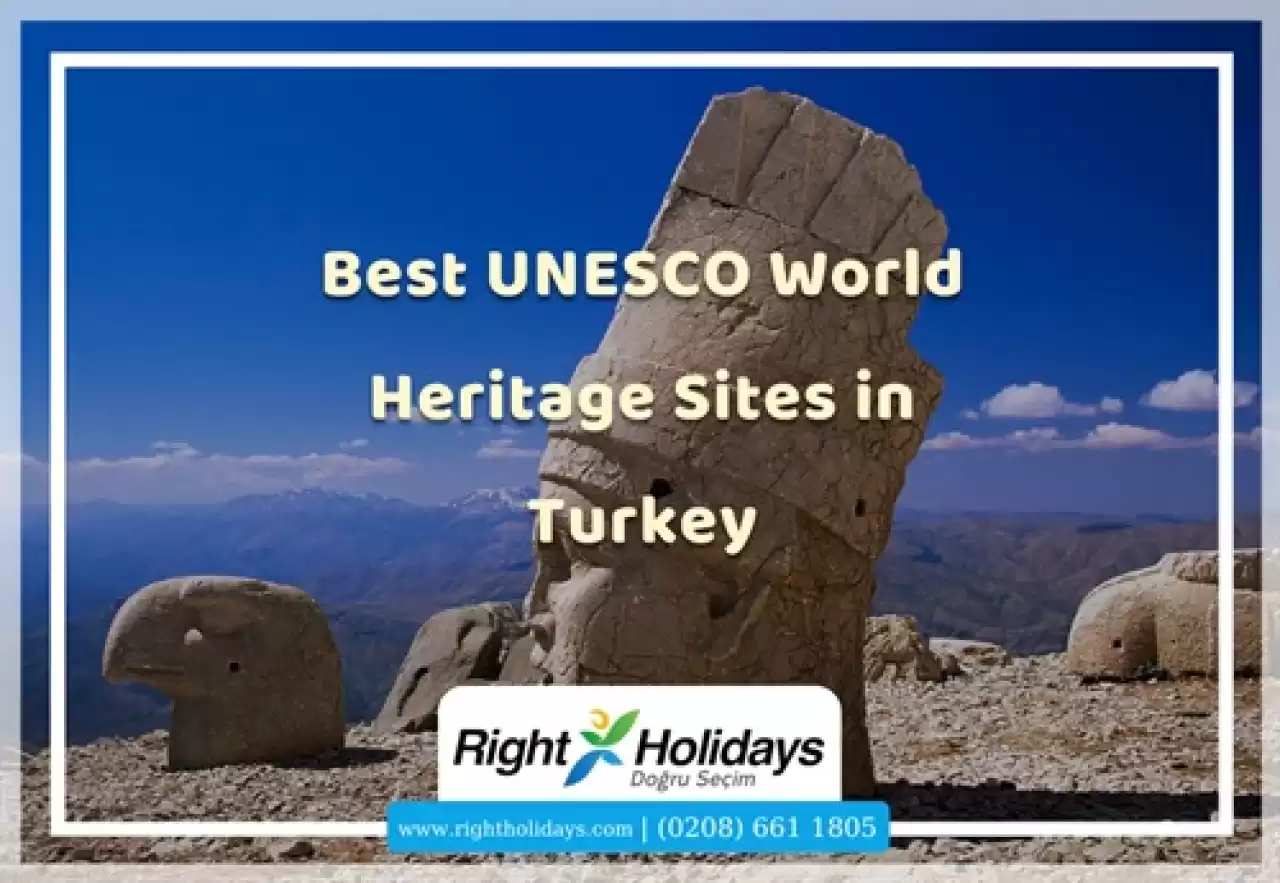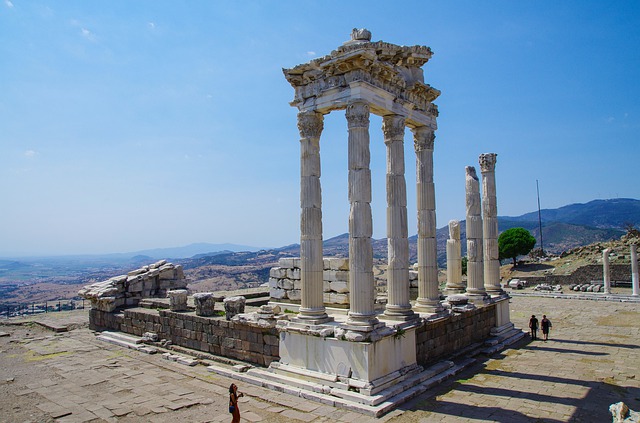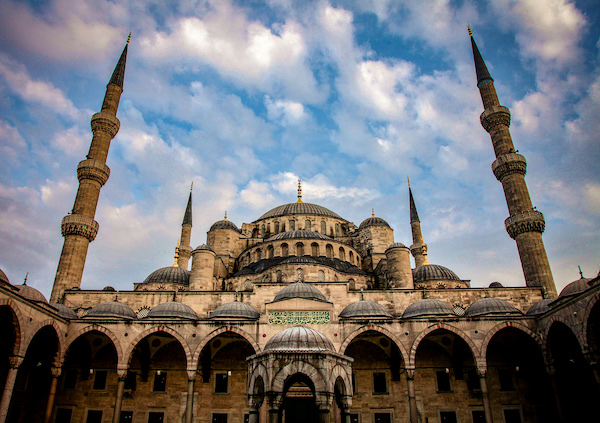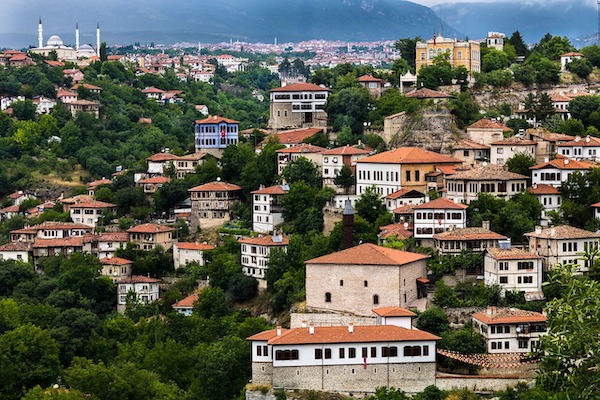Best UNESCO World Heritage Sites in Turkey
Best UNESCO World Heritage Sites in Turkey
Best UNESCO World Heritage Sites in Turkey
The most beautiful historical sites, protected nature reserves and landmarks are branded “world heritage” by UNESCO. These places are visited by thousands of people every year for their uniqueness and significance.
Turkey is a destination abundant in UNESCO World Heritage Sites, it’s home to a total of 18 of them, and there are over 80 sites that are on UNESCO’s Tentative List, waiting to be nominated. We’ve listed the absolutely must-see UNESCO World Heritage Sites in Turkey below.
If you have a few UNESCO sites on your list of places to visit, then make sure to buy the Turkey Museum Pass. It is valid for 15 days and costs around £50. You can visit up to 300 museums operated by the Ministry of Culture and Tourism. It also gives you a 10% discount on museum store purchases and at cafes in museums and archaeological sites.

Ephesus, İzmir
This popular ancient Greek city was inhabited in Neolithic, Hellenistic, Roman, Byzantine, Seljuk and Ottoman periods. The nearby Temple of Artemis is part of the Seven Wonders of the Ancient World. The UNESCO listing includes the Ancient City of Ephesus, the area of Ayasuluk and the Cukurici Mound.
Other structures such as the Library of Celsus and an amphitheatre of significant size are also amongst the reasons Ephesus is such a popular spot for tourism. Ephesus is also mentioned in the Book of Revelation; it was where one of the seven churches of Asia and the last home of Mary and the Gospel of John was located.
Pergamon, Bergama
About an hour and a half from Izmir city centre, Pergamon is an ancient city that was first settled in the Archaic period. After Alexander the Great removed the Persian Empire’s control in the area, it became the capital of the Kingdom of Pergamon and was ruled by the Greek dynasty Attalid. It quickly became a prosperous and cultural city during the Hellenistic period.
Today, it’s an outstanding example of Greek architecture, sculpture and urban planning. You can see the Temple of Athena, Great Altar of Pergamon, Dionysus Temple, agora, gymnasiums, the library and theatre. Compared to Ephesus, Pergamon is less crowded even during peak season.
Top Things to Do in the Aegean Coast of Turkey
Historic Areas of Istanbul
No wonder this legendary city is on the list. The historical landmarks in Istanbul are endless, both Byzantine and Ottoman civilizations left their architectural mark on this beautiful city. However, 8 particular landmarks that made UNESCO's list. These are; Topkapı Palace, Hagia Sophia, Sultan Ahmed Mosque, Sarayburnu, Hagia Irene, Zeyrek Mosque, Suleymaniye Mosque and Little Hagia Sophia.
Once ruled by the ancient Romans, Istanbul (Constantinople at the time) was a cosmopolitan city and a port for Eastern and Western trade. After Ottoman Empire’s dedicated emperor Mehmed the Conqueror conquered it, the Byzantine monuments were generally preserved which makes Istanbul an exciting city where the ancient melts into the new.
7 Guided Tours in Istanbul You Should Take
A Local's Travel Guide to Istanbul
Göreme National Park and the Rock Sites of Cappadocia
Perhaps the most magical destination on this list is Cappadocia and Göreme National Park. This volcanic landscape was miraculously sculpted by erosion. Since it’s been inhabited by humans as early as the 4th Century, the caves and underground cities of Goreme Valley are exceptional early human sites to discover.
The iconic hot air balloon tours allow visitors to see the best views of this gorgeous natural site; the fairy chimneys are worth seeing each season whether they are covered with snow or shining under the sun.
Places to Spend Christmas Holidays in Turkey
Mount Nemrut, Adıyaman
Located on one of the highest peaks in the South Western part of Turkey, Mount Nemrut is a 2,134 metre high mountain where King Antiochus I of Commagene’s tomb resides. The hike to the peak is not easy but it’s worth it since the iconic view of the landscape from the top is a must-see. King Antiochus I’s tomb is accompanied by giant statues of two lions, eagles, gods and the King himself. The best time to visit Mount Nemrut is late spring or early autumn.
The Hittite Capital Hattusa, Çorum
Located in the Anatolian city of Çorum, this impressive ancient city is almost 4,000 years old! Hattusa was home to one of the most advanced civilisations of its time, the Hittites. The Hittites were master ironworkers, and the site is proof of skilled urbanisation. The Great Temple is very well preserved, and other ruins such as Yazılıkaya, the Lions Gate, the King’s Gate and the Sphinx Gate show how artistic and crafty the people of Hattusa really were.
Xanthos-Letoon, Muğla
Located in between Antalya and Muğla, Xanthos-Letoon is an archaeological complex comprising the perfect examples of Lycian architecture as well as Anatolian, Greek, Roman, and Byzantine history and art. This is also where the most important inscriptions in Lycian language were found. You can still see the rocks and huge stone pillars on the site with these writings. There are examples of architectural and sculptural pieces such as Monument of Harpy, the Nereid Monument and the Tomb of Payava that show the Hellenistic influence on Lycian people.
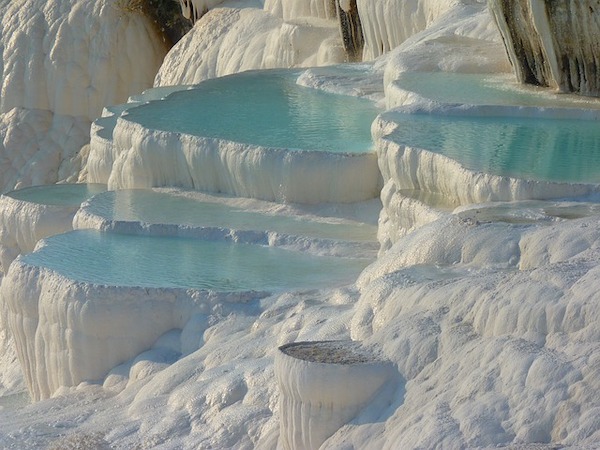
Hierapolis and Pamukkale (Cotton Castle), Denizli
Attalid Kings settled on top of the warm thermal springs of Pamukkale at the ancient Greco-Roman city of Hierapolis. They enjoyed soaking in the mineral-rich waters on Pamukkale’s terraced travertine pools. Hierapolis was a developed city at the time and today the ruins of temples, bathhouses, a theatre and more still remain. Pamukkale is truly one of the best travertine pools of its kind and today thousands of tourists come to see this natural beauty every year.
City of Safranbolu
This beautiful city is amongst the few cities where Ottoman architecture is the dominant style. Safranbolu (meaning “Plenty of Saffron”) was an important player in the caravan trade during the Ottoman period. When in Safranbolu, you must visit the marketplace in Çukur, Kıranköy and the vineyards of Bağlar, and hike up to the Bulak Mencilis Cave.
Göbeklitepe, Şanlıurfa
This mysterious archaeological site contains the world’s oldest temple. Dating back 11,500 years, Göbeklitepe predates Stonehenge, Temple of Apollo and others. This Neolithic site is a fascinating place to connect with our ancient ancestors, who sought an answer for their existence before any religion.

List of Places in Turkey on UNESCO’s Tentative List
Over 80 sites in Turkey are up for nomination for the UNESCO World Heritage List.
Karain cave in Antalya
Karain Cave is a large natural cave near Turkey’s Turquoise Coast of Antalya. It’s also an important Paleolithic archaeological site since remains of Neanderthals who lived over 200,000 years ago have been found in the cave.
St. Nicholas Church in Demre
St. Nicholas Church is located in the ancient city of Myra, now in the modern city of Demre in Antalya. It’s an East Roman basilica church that was built in AD 520. It’s also the burial place of St Nicholas, known to have inspired Santa Claus. The wall and ceiling frescos of the church are preserved perfectly, and they are a must-see.
Perge Ancient City in Antalya
Perge is thought to have been built in the 12th or 13th century BC. The city prospered during the Roman reign in the 2nd to 3rd centuries AD. The remains of the city are well preserved and it is possible to visit the necropolis, theatre, city walls, stadium, Roman baths and more of the ancient city.
Aizanoi Antique City, Kütahya
Aizanoi was an Ancient Greek city in western Anatolia. Located in Çavdarhisar near Kütahya, its ruins are still studied but the recent excavations date back to 3000 BC. The Temple of Zeus, the Complex of Stadium-Theatre and the Macellum are specifically the most important structures here.
Sümela Monastery
Nestled into the rock cliffs of Karadağ facing Altındere Valley, Sümela Monastery was built around 385 AD by a monk from Athens. The monastery has 72 rooms and a big library.
Travel Guide to Turkey’s Black Sea Coast
Featured


10 Things Avid Travel Planners Do
Details
Turkey Public Holidays Guide to Avoid Peak Travel Times
Details
List of Countries on the Travel Corridor in October
Details
Top Destinations in Cyprus for a Late Summer Trip
Details
Top 10 Outdoor Activities in Turkey
Details
How to Travel Safely During COVID-19?
Details



